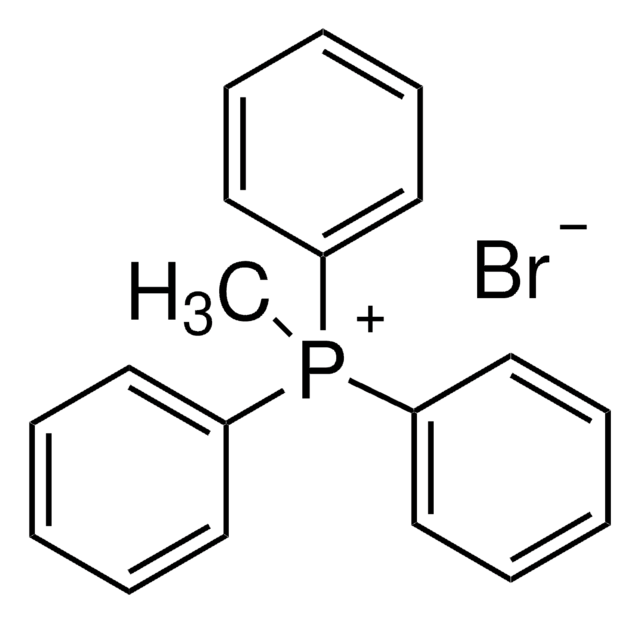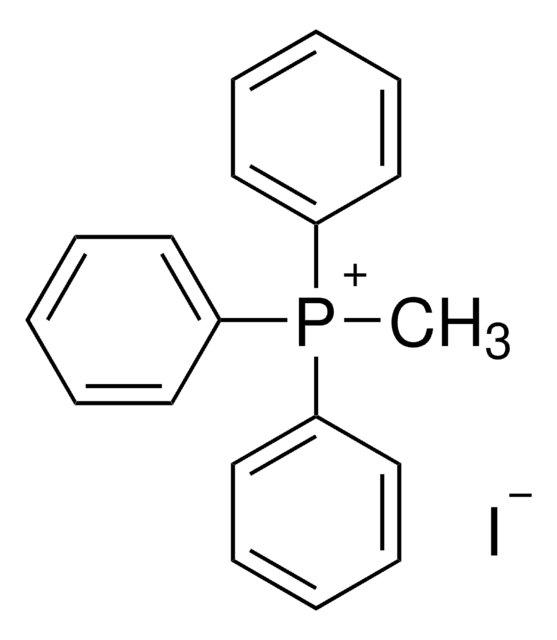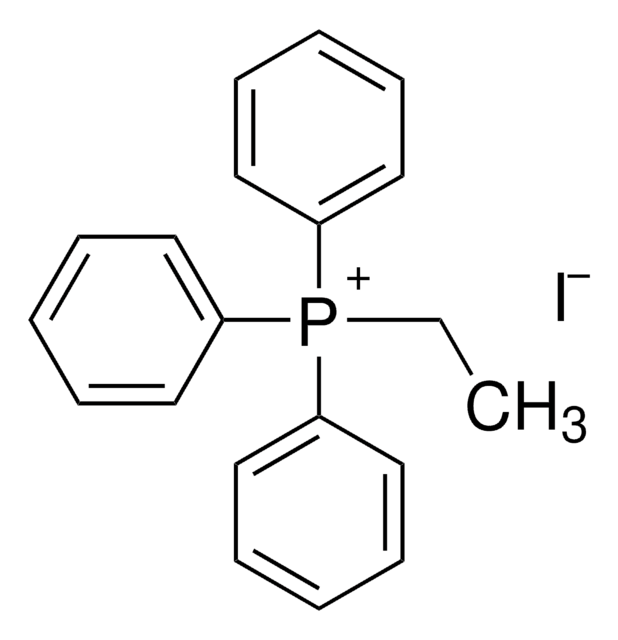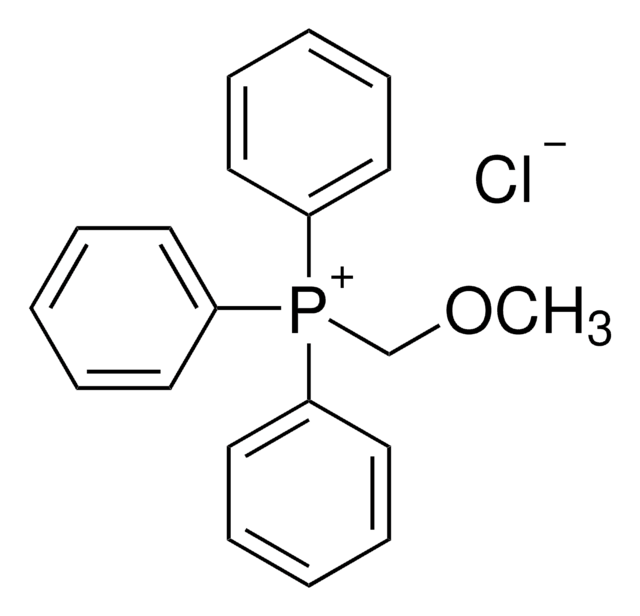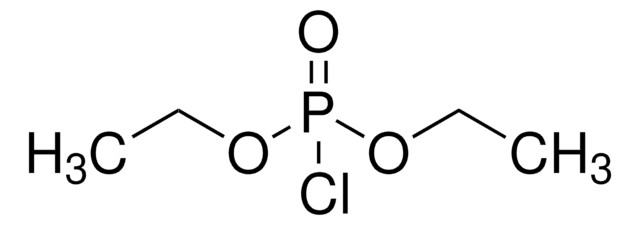E50604
Ethyltriphenylphosphonium bromide
99%
Synonyme(s) :
TEP
About This Item
Produits recommandés
Niveau de qualité
Essai
99%
Capacité de réaction
reaction type: C-C Bond Formation
Pf
203-205 °C (lit.)
Chaîne SMILES
[Br-].CC[P+](c1ccccc1)(c2ccccc2)c3ccccc3
InChI
1S/C20H20P.BrH/c1-2-21(18-12-6-3-7-13-18,19-14-8-4-9-15-19)20-16-10-5-11-17-20;/h3-17H,2H2,1H3;1H/q+1;/p-1
Clé InChI
JHYNXXDQQHTCHJ-UHFFFAOYSA-M
Vous recherchez des produits similaires ? Visite Guide de comparaison des produits
Catégories apparentées
Application
- D-amino acids from L-cysteine-derived thiazolidines
- Leiodolide A via aldol reactions and Horner-Wadsworth-Emmons olefination
- Cycloalkanoindolines via diastereoselective intramolecular inimo-ene reactions
- WXYZA′ domain of maitotoxin using the coupling of key building blocks
Reactant for:
- Solid-state metathesis polycondensation to form alkyl-dipropenylthiophene monomers
- Mizoroki-Heck cyclization and cascading Tsuji-Trost cyclization / lactonization cyclization reactions for synthesis of an ABC ring system
Mention d'avertissement
Danger
Mentions de danger
Conseils de prudence
Classification des risques
Acute Tox. 3 Oral - Aquatic Chronic 3 - Eye Dam. 1
Code de la classe de stockage
6.1D - Non-combustible acute toxic Cat.3 / toxic hazardous materials or hazardous materials causing chronic effects
Classe de danger pour l'eau (WGK)
WGK 2
Point d'éclair (°F)
401.0 °F
Point d'éclair (°C)
205 °C
Équipement de protection individuelle
dust mask type N95 (US), Eyeshields, Faceshields, Gloves
Faites votre choix parmi les versions les plus récentes :
Déjà en possession de ce produit ?
Retrouvez la documentation relative aux produits que vous avez récemment achetés dans la Bibliothèque de documents.
Notre équipe de scientifiques dispose d'une expérience dans tous les secteurs de la recherche, notamment en sciences de la vie, science des matériaux, synthèse chimique, chromatographie, analyse et dans de nombreux autres domaines..
Contacter notre Service technique